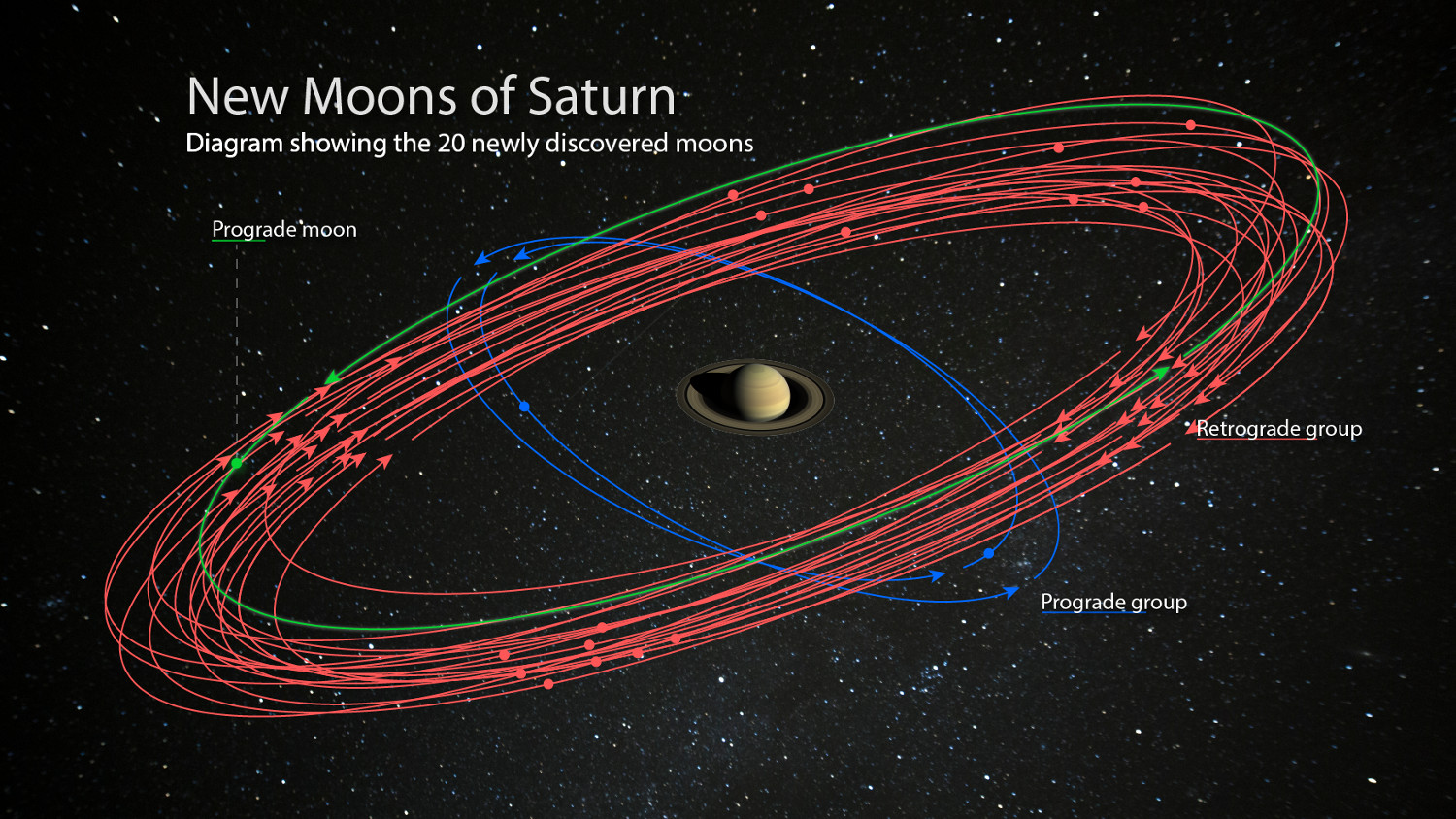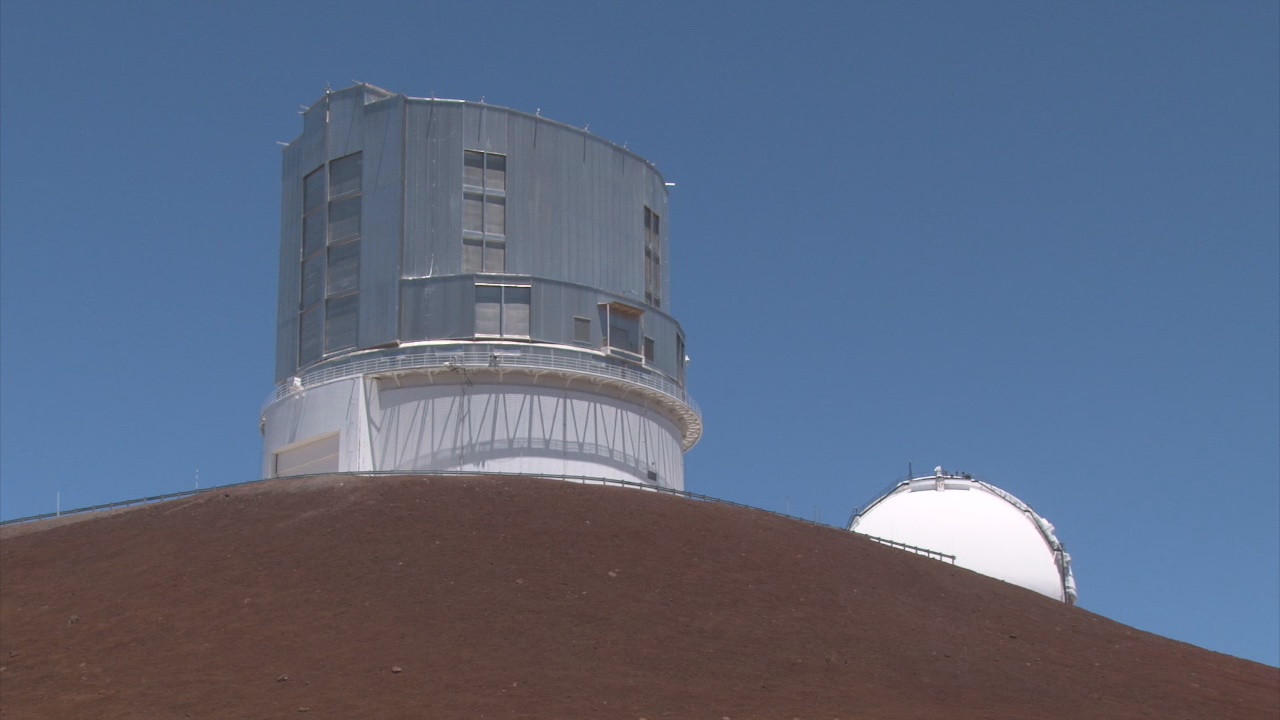(BIVN) – On Monday, scientists announced the discovery of 20 new moons orbiting Saturn, making the gas giant the planet with the most moons in the Solar System.
“Move over Jupiter; Saturn is the new moon king,” declared the media release circulated by the Carnegie Institution for Science. Jupiter is known to have 79 moons.
The discovery was made using the Subaru Telescope on Maunakea. Here is the media release issued by Subaru:
Each of the newly discovered moons is about five kilometers, or three miles, in diameter. Seventeen of them orbit the planet backwards, or in a retrograde direction, meaning their movement is opposite of the planet’s rotation around its axis. The other three moons orbit in the prograde—the same direction as Saturn rotates.
Two of the prograde moons are closer to the planet and take about two years to travel once around Saturn. The more-distant retrograde moons and one of the prograde moons each take more than three years to complete an orbit.
“Studying the orbits of these moons can reveal their origins, as well as information about the conditions surrounding Saturn at the time of its formation,” Sheppard explained.
The outer moons of Saturn appear to be grouped into three different clusters in terms of the inclinations of the angles at which they are orbiting around the planet. Two of the newly discovered prograde moons fit into a group of outer moons with inclinations of about 46 degrees called the Inuit group, as they are named after Inuit mythology. These moons may have once comprised a larger moon that was broken apart in the distant past. Likewise, the newly announced retrograde moons have similar inclinations to other previously known retrograde Saturnian moons, indicating that they are also likely fragments from a once-larger parent moon that was broken apart. These retrograde moons are in the Norse group, with names coming from Norse mythology. One of the newly discovered retrograde moons is the farthest known moon around Saturn.
“This kind of grouping of outer moons is also seen around Jupiter, indicating violent collisions occurred between moons in the Saturnian system or with outside objects such as passing asteroids or comets,” explained Sheppard.
The other newly found prograde moon has an inclination near 36 degrees, which is similar to the other known grouping of inner prograde moons around Saturn called the Gallic group. But this new moon orbits much farther away from Saturn than any of the other prograde moons, indicating it might have been pulled outwards over time or might not be associated with the more inner grouping of prograde moons.
If a significant amount of gas or dust were present when a larger moon broke apart and created these clusters of smaller moon fragments, there would have been strong frictional interactions between the smaller moons and the gas and dust, causing them to spiral into the planet.
“In the Solar System’s youth, the Sun was surrounded by a rotating disk of gas and dust from which the planets were born. It is believed that a similar gas-and-dust disk surrounded Saturn during its formation,” Sheppard said. “The fact that these newly discovered moons were able to continue orbiting Saturn after their parent moons broke apart indicates that these collisions occurred after the planet-formation process was mostly complete and the disks were no longer a factor.”
The new moons were discovered using the Subaru Telescope. The observing team included Sheppard, David Jewitt of UCLA, and Jan Kleyna of the University of Hawaii.
“Using some of the largest telescopes in the world, we are now completing the inventory of small moons around the giant planets,” says Scott Sheppard. “They play a crucial role in helping us determine how our Solar System’s planets formed and evolved.”
Last year, Sheppard discovered 12 new moons orbiting Jupiter and Carnegie hosted an online contest to name five of them.
“I was so thrilled with the amount of public engagement over the Jupiter moon-naming contest that we’ve decided to do another one to name these newly discovered Saturnian moons,” Sheppard said. “This time, the moons must be named after giants from Norse, Gallic, or Inuit mythology.” Contest details are available here.



by Big Island Video News12:10 am
on at
STORY SUMMARY
MAUNAKEA, Hawaiʻi - Saturn's total moon count now stands at 82, which surpasses Jupiter (79) to become the planet with the most moons in the Solar System.